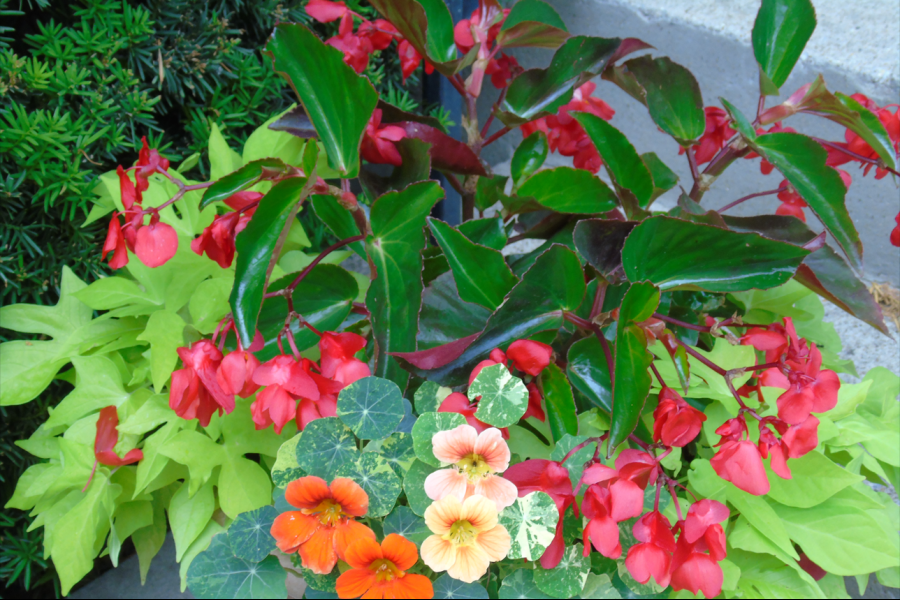Well, our milder night-time temperatures mean it should be safe to put our annual containers out.
Container gardening is something that everyone can participate in. Whether you live in a house or an apartment with a balcony, growing flowers, tropical plants and vegetables can spruce up any living space.
Here are a few things to consider before getting started.
The first thing to think about is selecting the right pot. Determine your style or the effect that you want to create (e.g. modern, rustic, Zen etc.). Choosing a container with the proper shape, material and colour can help convey your style.
You also must consider how much space you have at pots should be proportional to your space. The larger the space, the larger the containers should be, or you might want to group a number of pots together to create the same effect.
All pots must have proper drainage, so make sure you have suitable saucers if necessary. If pots are going to be sitting directly on a hard surface, they should be raised one or two inches for proper drainage.
The next consideration is selecting the right plants for your pots. First, you need to know how much sun the area is receiving and at what time of day. If a plant requires full sun, it will need a minimum of six hours or more of sun during the day.
Part shade means four to five hours of sun daily and shade is anything less than four hours. If the plant is not in the right light conditions it will not perform at its peak no matter how much you fertilize it.
Your choice of plants will also help convey your desired style whether it be tropical, English cottage or contemporary etc.
Maybe you have a pool and want to have lush-looking planters to add ambiance. Using tropical plants or annuals with larger leaves will help to create that look.
For a more contemporary look, you want to use a pot with simple lines and have a main architectural plant for your focal point with just a couple different trailing plants. To achieve a more rustic effect, use more varieties of flowering plants, including some daisy-shaped flowers.
The colour of the flowers you choose will also help create the mood you want to convey. Pastel colours, also known as cool colours, consist of whites, pinks, purples and blues. These colours are relaxing and tranquil and will recede in the garden, so they are best appreciated up close.
Using cool colours in a smaller space will help make the area seem larger. Warm colours (reds, oranges, yellows and burgundys) are vibrant and add excitement to an area.
When put into the garden, these colours come at you and can make an area seem smaller. If you are placing a pot in a far corner, the warm colours will make more of an impact than the cool colours.
Remember to consider the textures of flowers and leaves when choosing your plants. Small feathery leaves and dainty flowers give a delicate, subtle look and are appreciated more when seen up close.
Bold flowers and large leaves can be appreciated from a distance. To achieve a balanced look, make sure that there is a good mixture of bold and delicate flowers, and foliage. Make sure that you always have different coloured leaves in the container.
Here are a few last helpful hints:
Proper watering is key. Plants in containers will dry out quicker than they would in the ground and therefore need to be watered more frequently.
Watering frequency depends on the size and type of pot, the type of soil used, the type of plants used and the location of the container. A small container in a hot, windy location will dry out quicker than a large pot in a cool shady area.
Since you are watering containers more often, they also need to be fertilized more often (fertilizer is leaching through the pots quicker). A good, slow-releasing fertilizer is one with osmocote. A heavy blooming plant requires more fertilizer.
Removing spent blooms will increase the number of new blooms.
Remove unsightly, diseased or insect-infested foliage as soon as it appears to stop the spread of insects or diseases.
As you are starting to get your container ready for the summer, try something new – like a new combination of plants. Try a different colour. Try a different look.
Joanne Young is a Niagara-on-the-Lake garden expert and coach. See her website at joanneyoung.ca.











